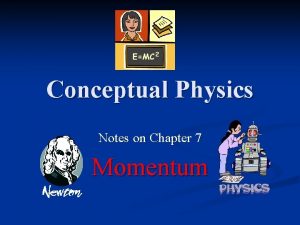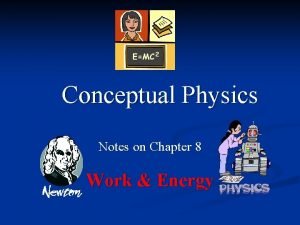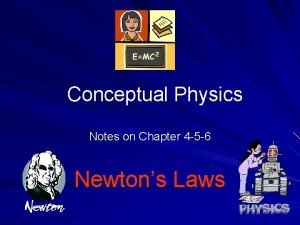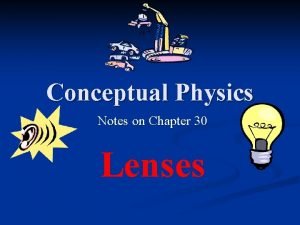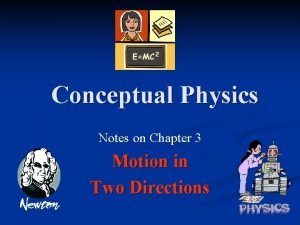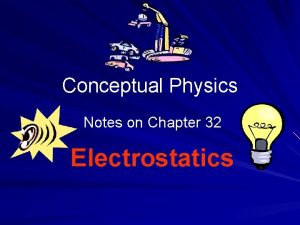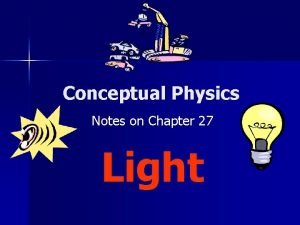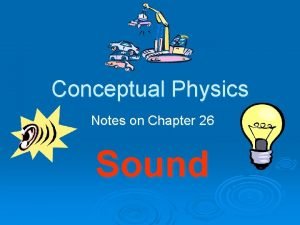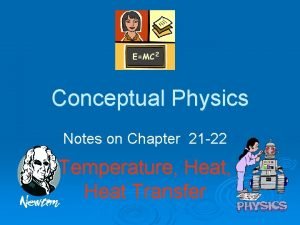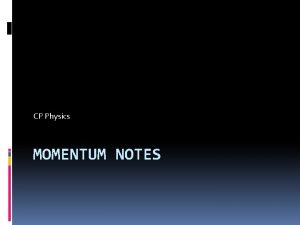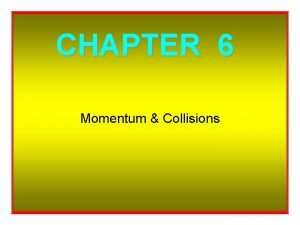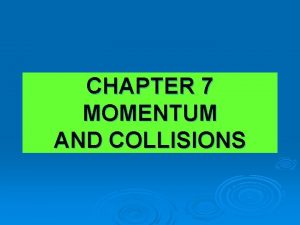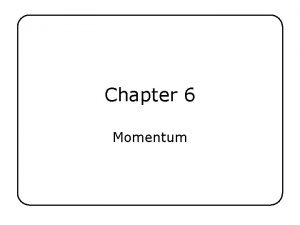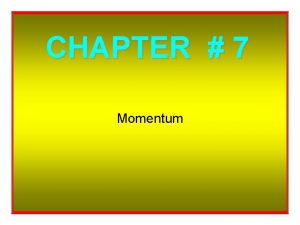Conceptual Physics Notes on Chapter 7 Momentum Momentum











- Slides: 11

Conceptual Physics Notes on Chapter 7 Momentum

Momentum n Momentum ( p ) is mass of an object times velocity. p = mv n Any object can have a large momentum if that object has a large mass, a large velocity, or both.

Momentum n To change the momentum of any object, you need to change the velocity. To change any velocity you need to apply a FORCE. n But how long that force is applied is important.

Momentum n Force times time is Impulse ( I ) I = Ft n Impulse is applied to momentum so the two expressions can be equated together. Ft = Δmv

Momentum Bouncing: n Bouncing does not necessarily increase impact force. That depends on impact time. Let’s look at some situations.

Momentum n Bouncing makes the time of Impact small…therefore the Force becomes LARGE! I= n F t Can you think of a situation where this could be used and useful?

Momentum n On the other hand…. if the time is LARGE then the FORCE is small. I= n t F Can you think of a situation where this could be used and useful?

Momentum n Lets compare: I= F t I= t F Note: Impulse is the SAME in BOTH cases!

Momentum Conservation of Momentum n Law of momentum states: In the absence of an external force, the momentum of a system remains unchanged. n When the momentum does not change, we say the quantity is conserved.

Momentum Collisions: n In collisions, momentum is conserved as long as no external force acts on the system. Net Momentum Before = Net Momentum After

Momentum Two Types of Collisions: n Elastic - Collision without being deformed or generating heat. (Object don’t stick together) n Inelastic - Collision when object become tangled or couple together. (Objects stick together)
 Chapter 6 momentum changing momentum
Chapter 6 momentum changing momentum Conceptual physics chapter 7 momentum answers
Conceptual physics chapter 7 momentum answers Chapter 8 energy conceptual physics
Chapter 8 energy conceptual physics Conceptual physics chapter 4
Conceptual physics chapter 4 Chapter 30 conceptual physics
Chapter 30 conceptual physics Conceptual physics notes
Conceptual physics notes Chapter 35 electric circuits
Chapter 35 electric circuits Chapter 33 conceptual physics
Chapter 33 conceptual physics Conceptual physics electrostatics
Conceptual physics electrostatics Chapter 27 light
Chapter 27 light Conceptual physics chapter 26
Conceptual physics chapter 26 Conceptual physics chapter 21
Conceptual physics chapter 21

